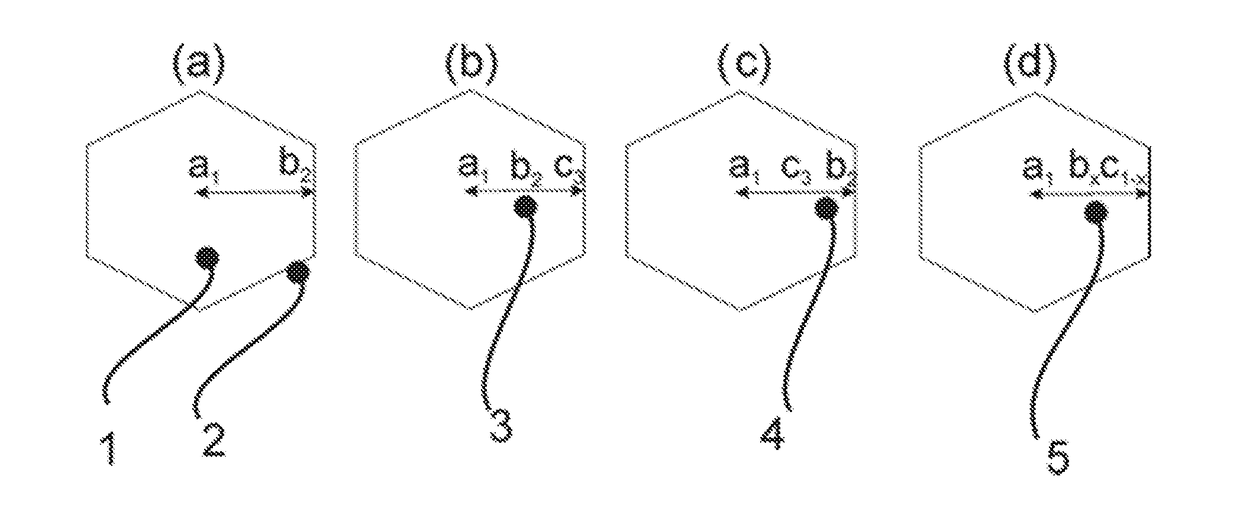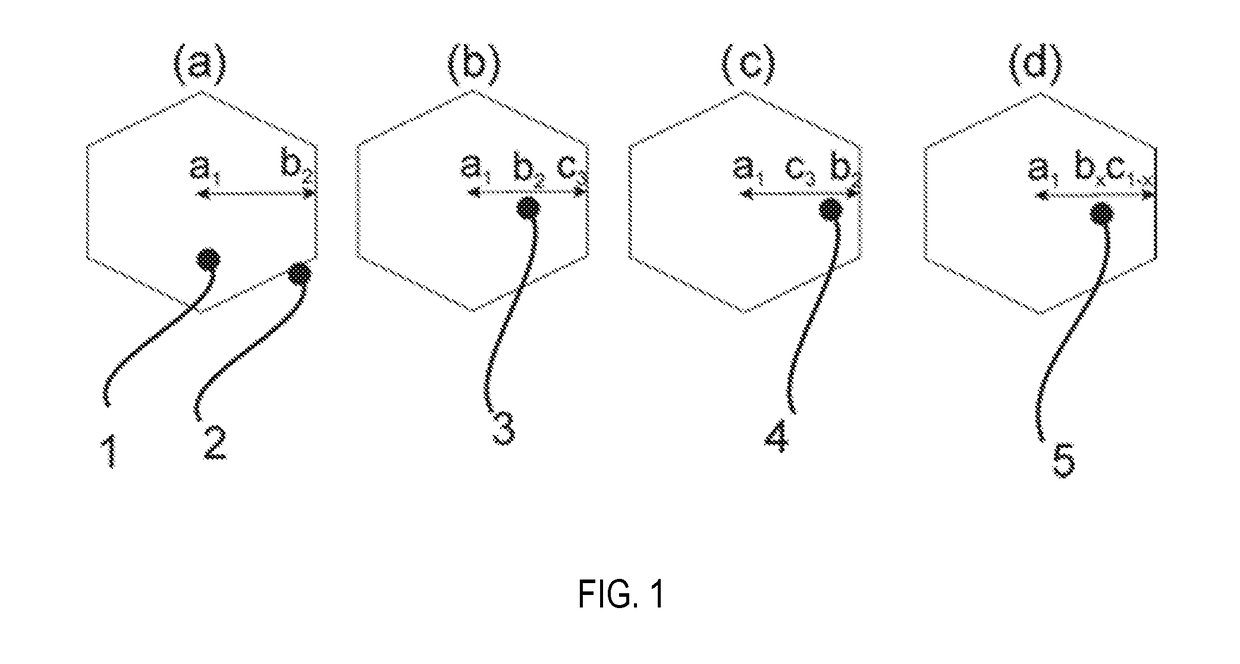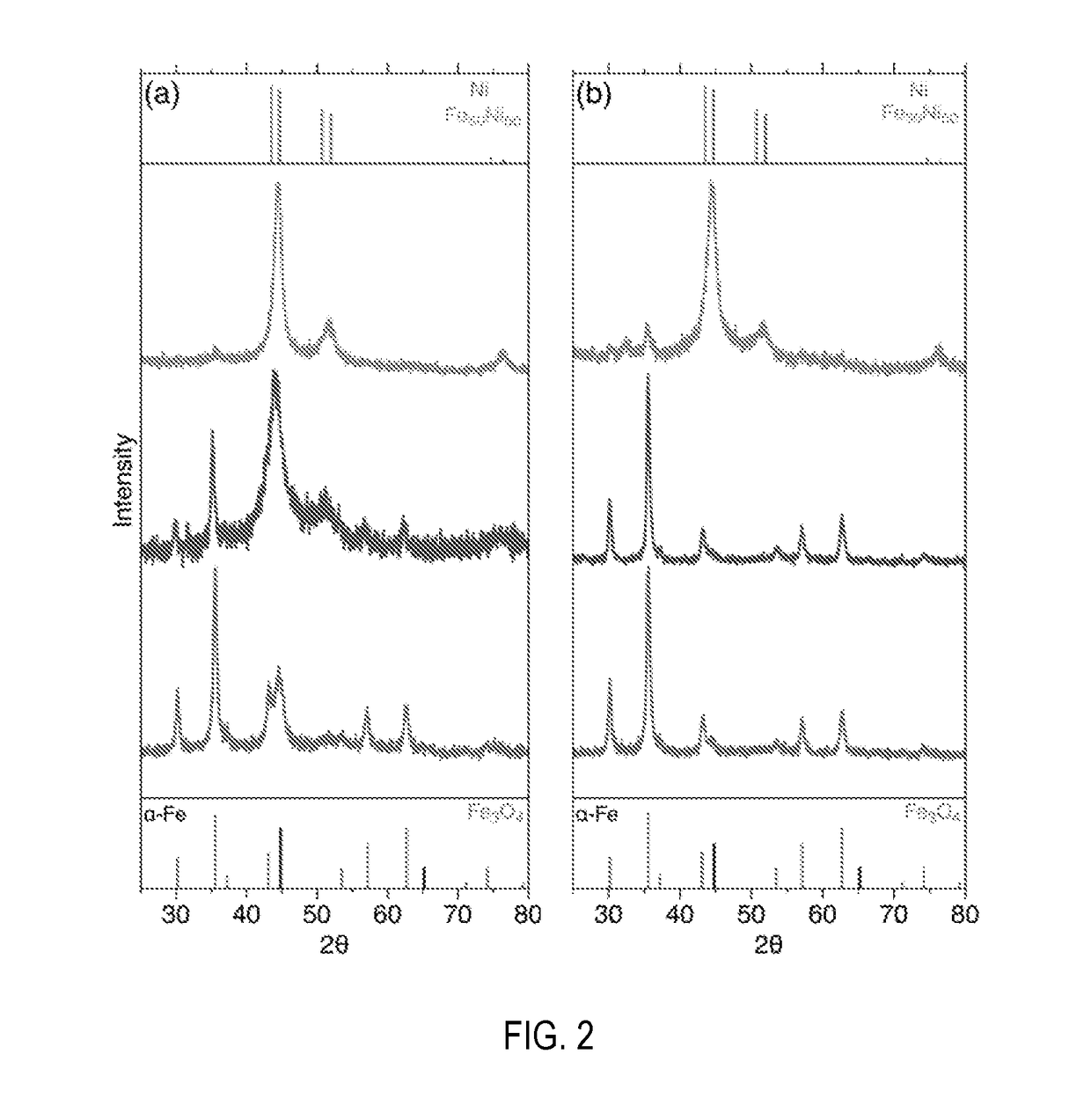Compositions of nanoparticles with radial gradients and methods of use thereof
- Summary
- Abstract
- Description
- Claims
- Application Information
AI Technical Summary
Benefits of technology
Problems solved by technology
Method used
Image
Examples
Example
Example 1: Synthesis of Fe—Ni, v-Fe—Ni, and Fe-v-Ni Gradients
[0069]Crystalline b.c.c. Fe nanoparticles were used. The metallic Fe nanoparticles could be prepared in a number of ways, in this example, it was prepared using the decomposition of iron (0) pentacarbonyl (Fe(CO)5) in the presence of ligands, like oleylamine (OAm), and hexadecylamine chloride (HDACl). In a simple case, 19.0 mL of a high boiling point solvent, like octadecene (ODE), ˜200 mg HDACl, and ˜1.0 mL OAm were combined and degassed at 120° C. for 0.5 h. This mixture was then heated to 180° C. in a four neck flask under Ar, then 0.35 mL of Fe(CO)5 (1.0 M in THF) was injected via an airtight needle into the solution under Ar forming the iron nanoparticle centers. While in this example the sizes of centers were on the order of 8-12 nanometers and are largely spherical, it is anticipated that the subsequent steps described herein would also work for larger size diameters (5-500 nm), as well as for centers of different s...
Example
Example 2: Synthesis of Fe—Cr—Ni Gradients
[0070]In the tri-metallic gradient nanoparticle the Cr-precursor was introduced at different points in the synthesis. The hexacarbonyl chromium (0) (Cr(CO)6) precursor solution was prepared by dissolving 650 mg Cr(CO)6 in 20 mL of dioctylether at 100° C. under inert atmosphere. In this example, the Cr(CO)6 precursor was chosen due to its metallic Cr (Cr0), but it is understood that other precursors could be used. The Ni-precursor was prepared similarly to that described above.
[0071]In a typical synthesis, 6.8 mL of the Cr precursor was added into solution of Fe NP (prepared as shown above) under Ar at 180° C. For instance, a 2.3 mL aliquot was added slowly then annealed for 15 min before additional components. Next, a total of 9.4 mL of the Ni precursor was slowly added. The temperature was maintained at a minimal of 180° C. Injection amount of Ni precursor was split equally in smaller volumes and added over 50 min to avoid dramatic temperat...
Example
Example 3: Synthesis of Fe—Ni—Cr Gradients
[0072]The Fe—Ni—Cr gradients were prepared similarly, with varied precursor sequence. In this example, a total of 9.4 mL Ni precursor was slowly deposited at temperatures of at least at 180° C. Next, 6.8 mL of the Cr precursor was slowly added at temperatures of at least 180° C. The nanoparticles were purified as described above. See FIGS. 6-8, 10. The Fe—Ni—Cr gradient nanoparticles of larger diameters (10-100 nm, >100 nm) could be prepared by altering metal precursor to ligand concentrations, nucleation temperature, or number of gradients.
PUM
| Property | Measurement | Unit |
|---|---|---|
| Fraction | aaaaa | aaaaa |
| Fraction | aaaaa | aaaaa |
| Fraction | aaaaa | aaaaa |
Abstract
Description
Claims
Application Information
 Login to View More
Login to View More - R&D
- Intellectual Property
- Life Sciences
- Materials
- Tech Scout
- Unparalleled Data Quality
- Higher Quality Content
- 60% Fewer Hallucinations
Browse by: Latest US Patents, China's latest patents, Technical Efficacy Thesaurus, Application Domain, Technology Topic, Popular Technical Reports.
© 2025 PatSnap. All rights reserved.Legal|Privacy policy|Modern Slavery Act Transparency Statement|Sitemap|About US| Contact US: help@patsnap.com



